Editor’s note: Are you interested in a fuller appreciation of the birds of the Shanghai region? If so, then visiting Shanghai’s exciting coastal sites is not enough. You need to go inland, to the hilly interior. You need to visit the Tianmu Mountains. In this two-post series, Shanghai birder Komatsu Yasuhiko and I introduce you to the mountain range in Zhejiang. This first post was written by me and describes the key birds and habitats at Tianmushan. I also discuss my first trip to Tianmu. In the second post, Hiko describes his trip to the mountain. — Craig Brelsford
by Craig Brelsford
Founder, shanghaibirding.com
WHAT IS TIANMUSHAN?
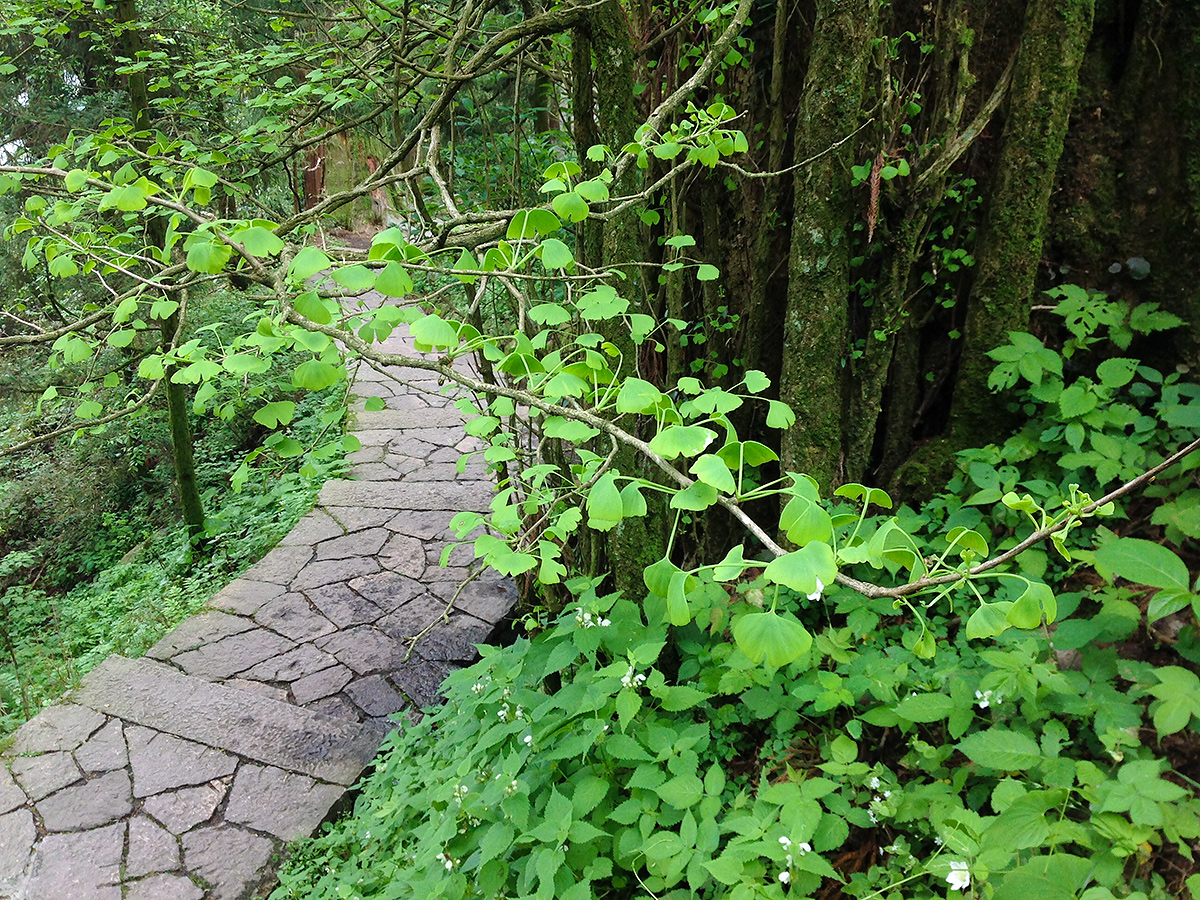
Tianmushan is a mountain range 270 km (168 mi.) southwest of Shanghai. The thickly forested slopes are the place closest to the city where large numbers of south China species can be seen. Elliot’s Pheasant, Short-tailed Parrotbill, Moustached Laughingthrush, Hartert’s Leaf Warbler, and Spotted Elachura are just a few of the south China species recorded at Tianmushan and scarce or unrecorded in Shanghai. Silver Pheasant, Koklass Pheasant, Slaty Bunting, and Crested Bunting are also at Tianmu.
With elevations reaching 1506 m (4,941 ft.), Tianmushan offers a refreshing contrast to Shanghai’s coastal environments. Springtime is the best time to visit, but summer offers good birding and a respite from the lowland heat, and in autumn migrants and wintering birds can be seen.
The best-known birding area at Tianmushan is West Tianmu Mountain Nature Reserve. The reserve boasts a forest worthy of a fairy tale. Below Xianren Ding (仙人顶), the highest peak in the area, a boardwalk trail leads through a land of giants—stands of Japanese Cedar Cryptomeria japonica 25 m (82 ft.) high and a thousand years old. What is claimed to be the only wild Ginkgo biloba trees in the world are also in this magical garden. Look here for Black Eagle, Chestnut-winged Cuckoo, and Buffy Laughingthrush, among many other species.
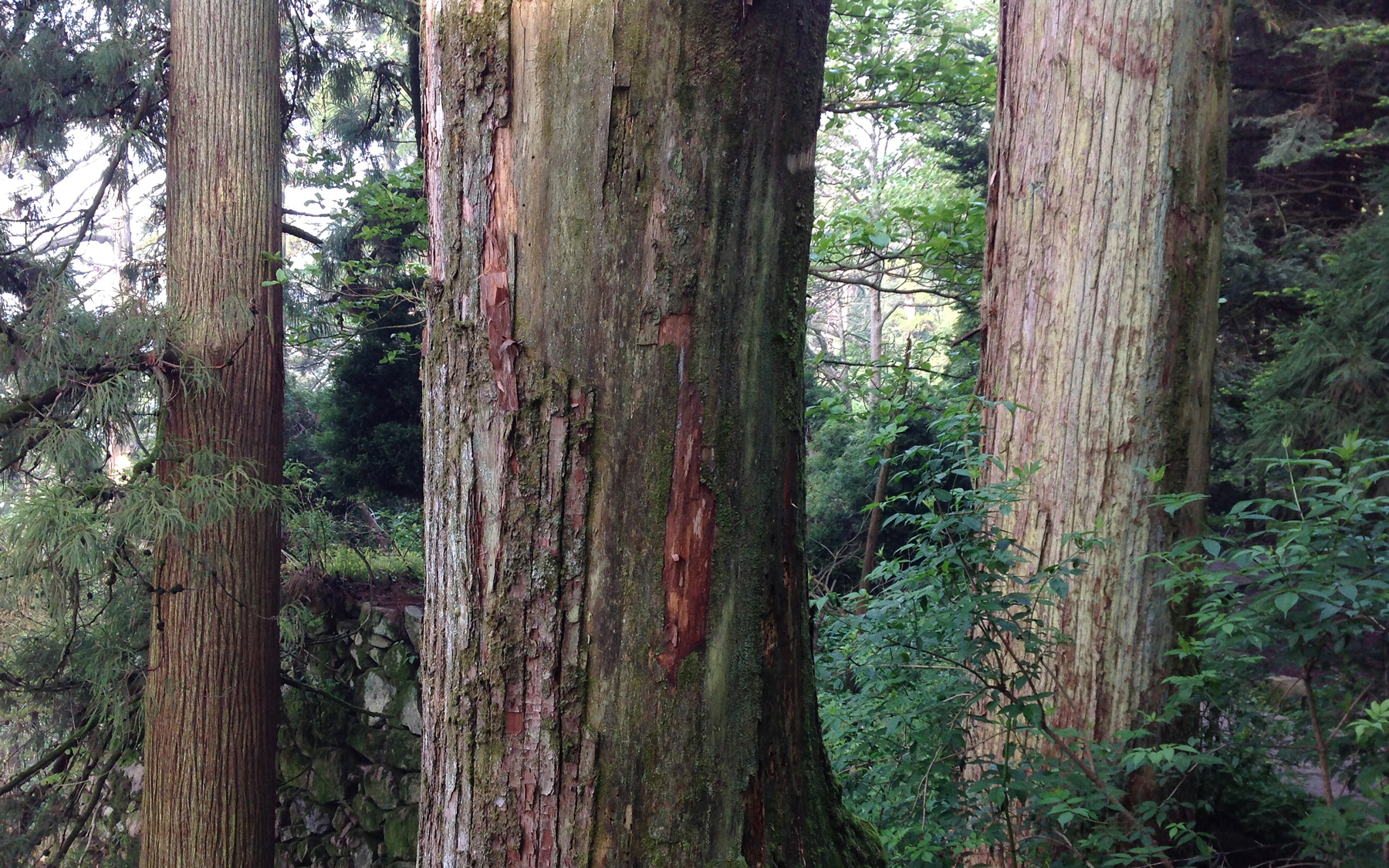
At West Tianmu you can bird the following areas:
• The 12.7 km (7.9 mi.) road between Longfengjian (龙凤尖, 30.344148, 119.440201) and the hotels on the floor of the valley. Longfengjian serves as the parking area for the Japanese Cedar forest below Xianren Ding.
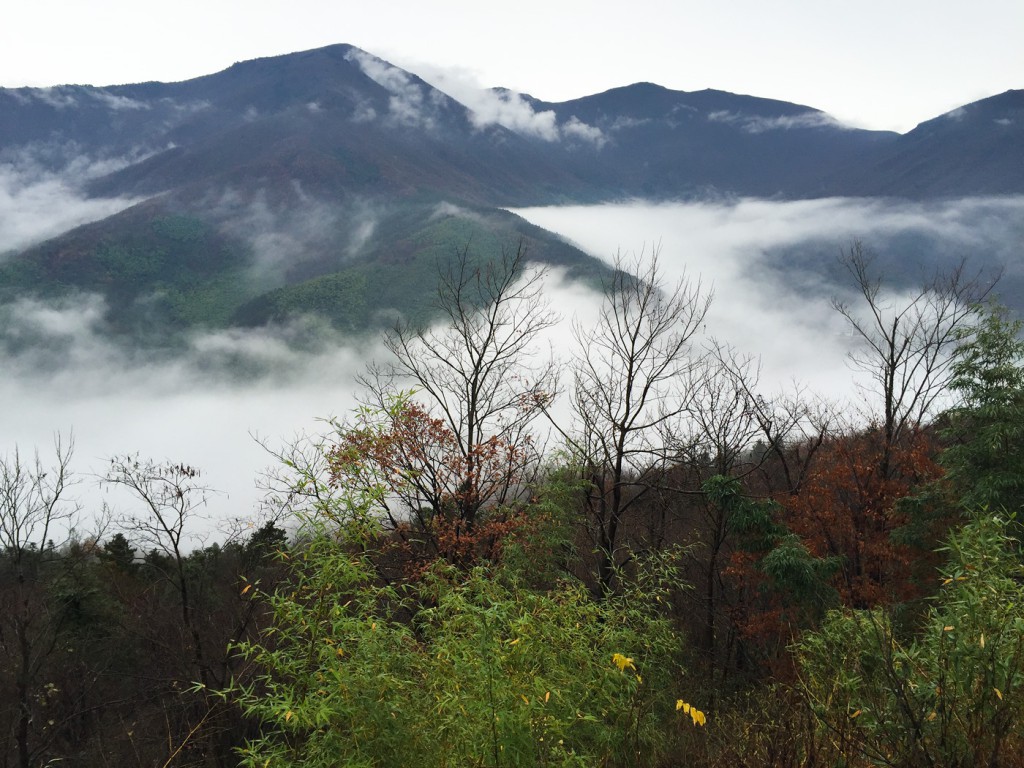
Take the bus to Longfengjian and walk the road back. You’ll descend about 700 m (2,300 ft.). Find Koklass Pheasant along the road, Little Forktail along the streams, and Short-tailed Parrotbill amid the bamboo. You could combine this walk with a visit to the Japanese Cedar forest and Xianren Ding and thereby cover in a single day an altitudinal range of more than 1000 m (3,280 ft.).
• Area around entrance to West Tianmu.
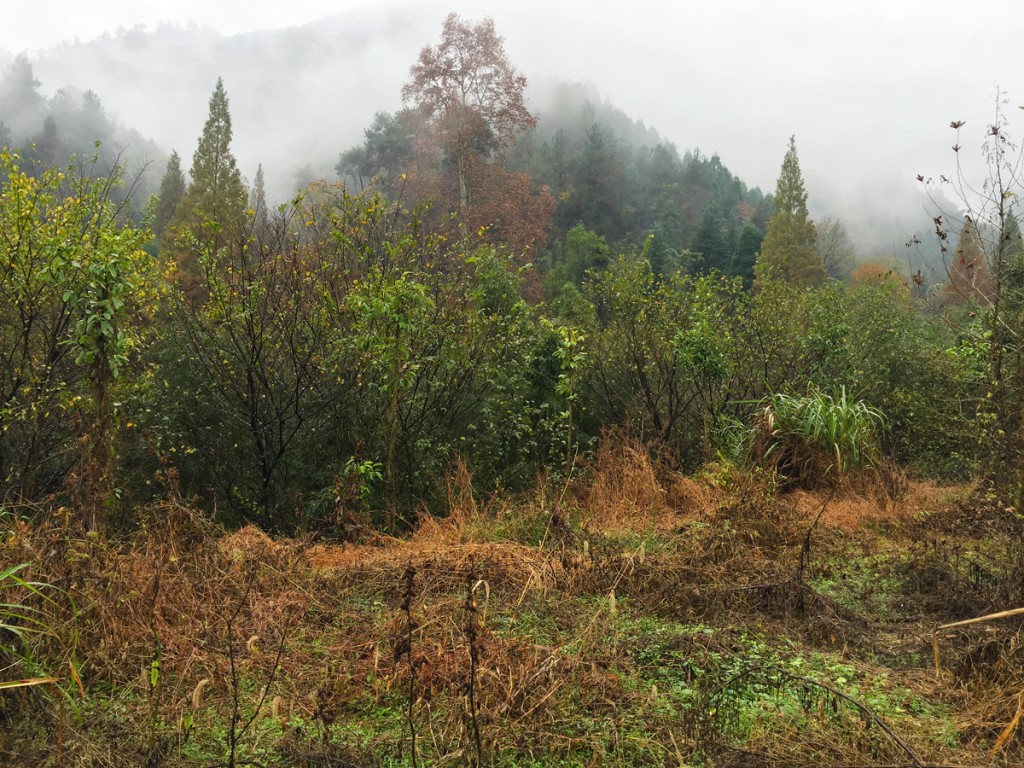
This is one of the broadest areas in the valley and offers streamside habitat as well as scrub, garden, and secondary forest. Asian House Martin breed in the eaves of the ticket office and other buildings, the forest holds Grey-chinned Minivet and Brown-flanked Bush Warbler, and the streams are good for White-crowned Forktail.
KEY BIRDS OF TIANMUSHAN
Koklass Pheasant Pucrasia macrolopha
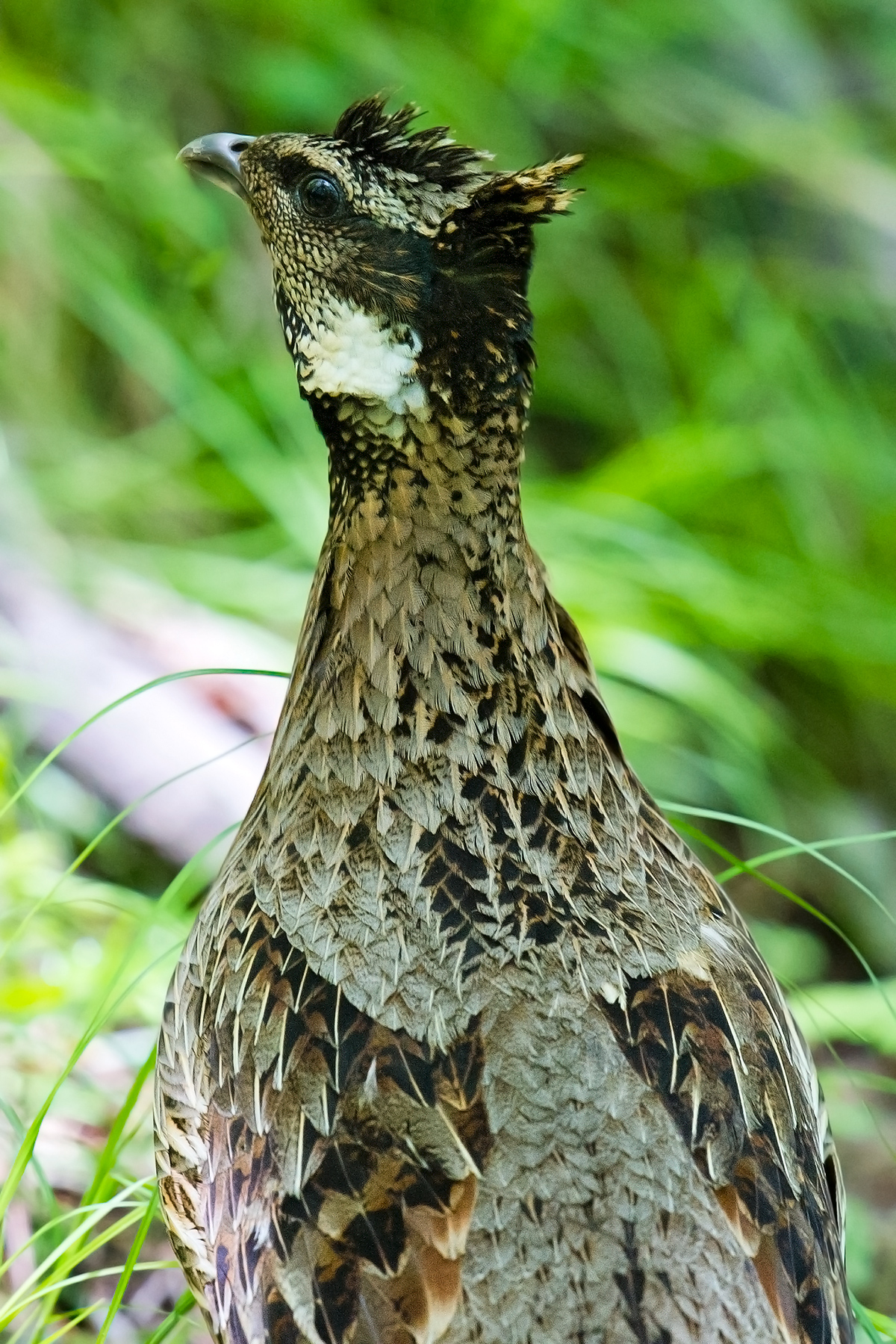
Crested Serpent Eagle Spilornis cheela
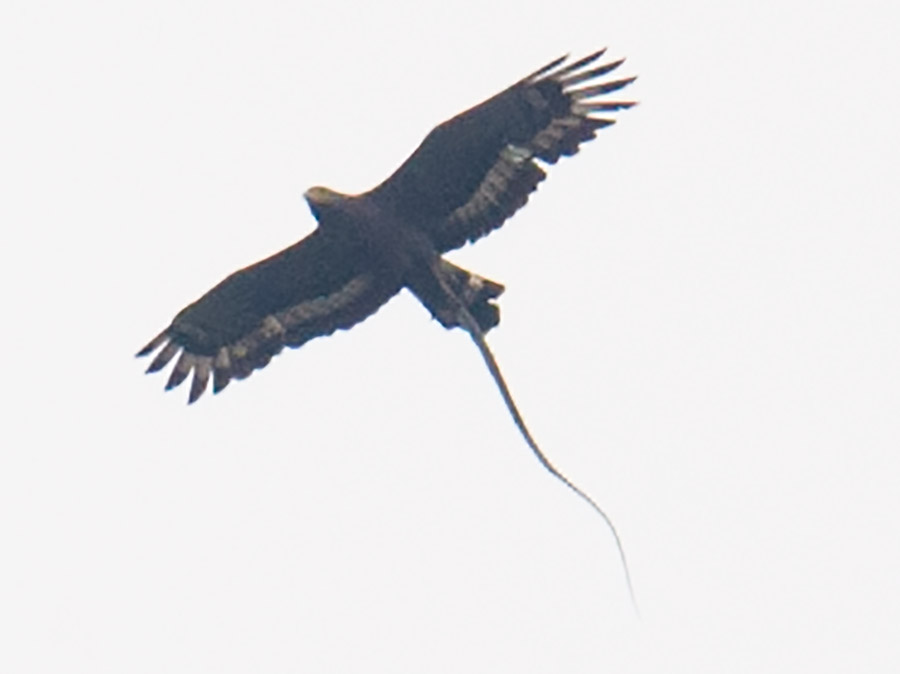
Black Eagle Ictinaetus malaiensis
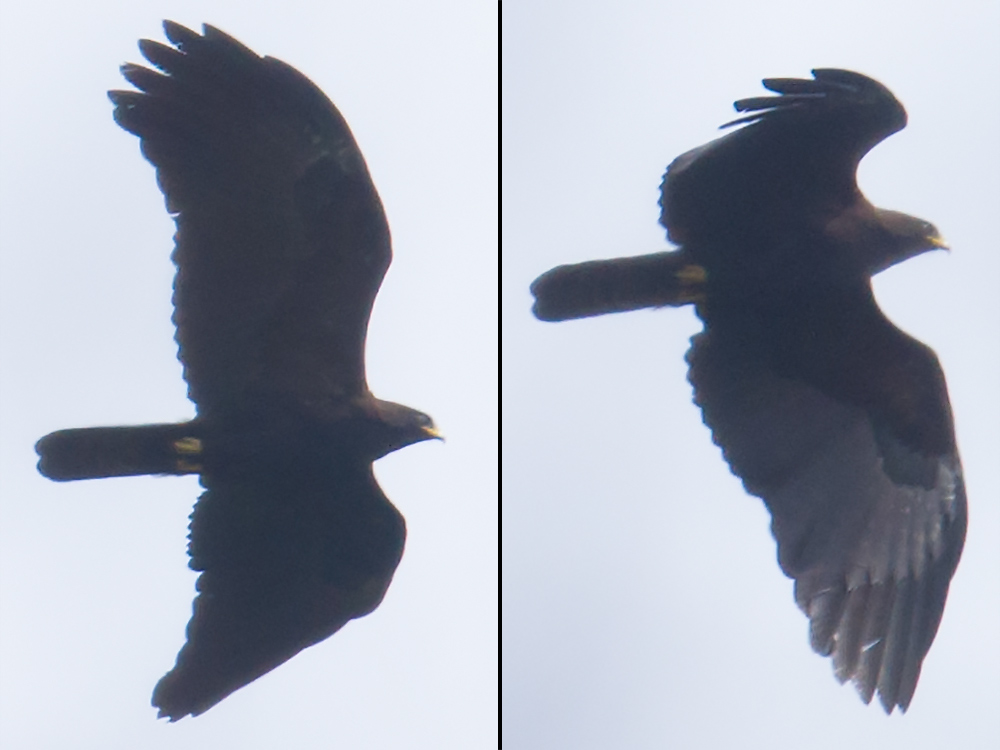
Chestnut-winged Cuckoo Clamator coromandus
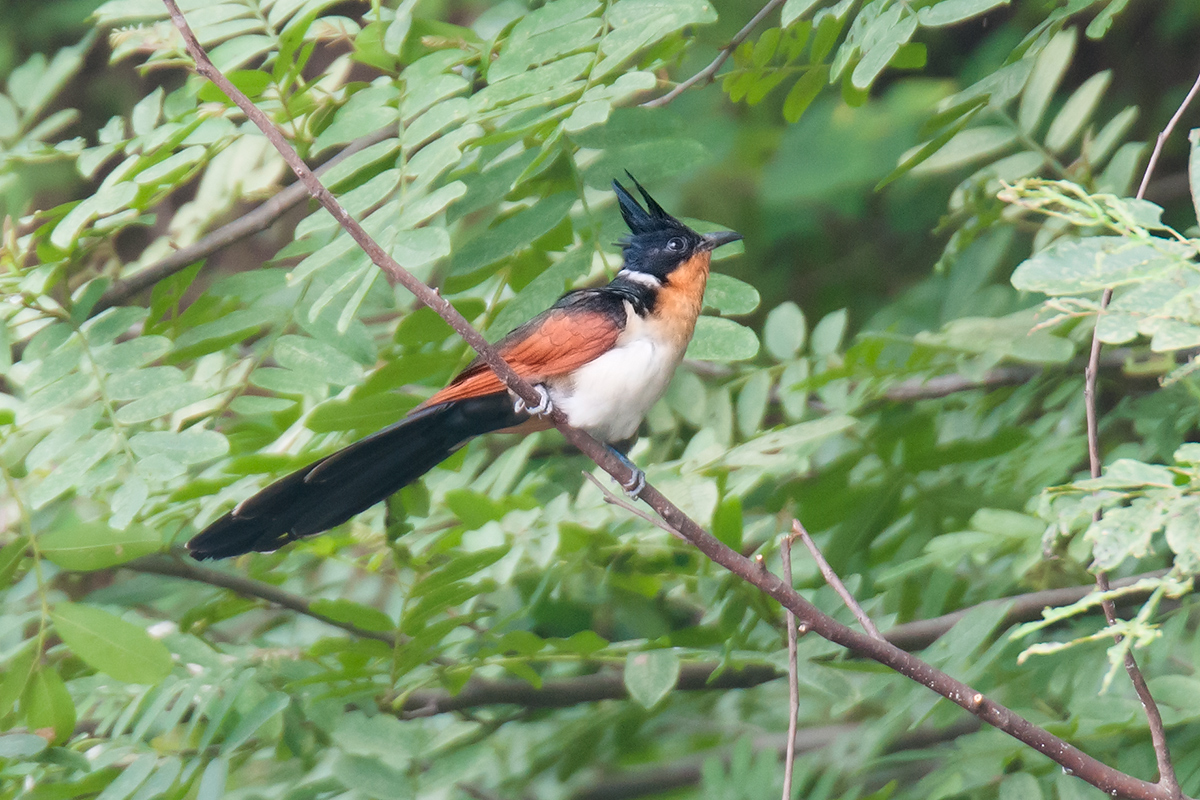
Swinhoe’s Minivet Pericrocotus cantonensis
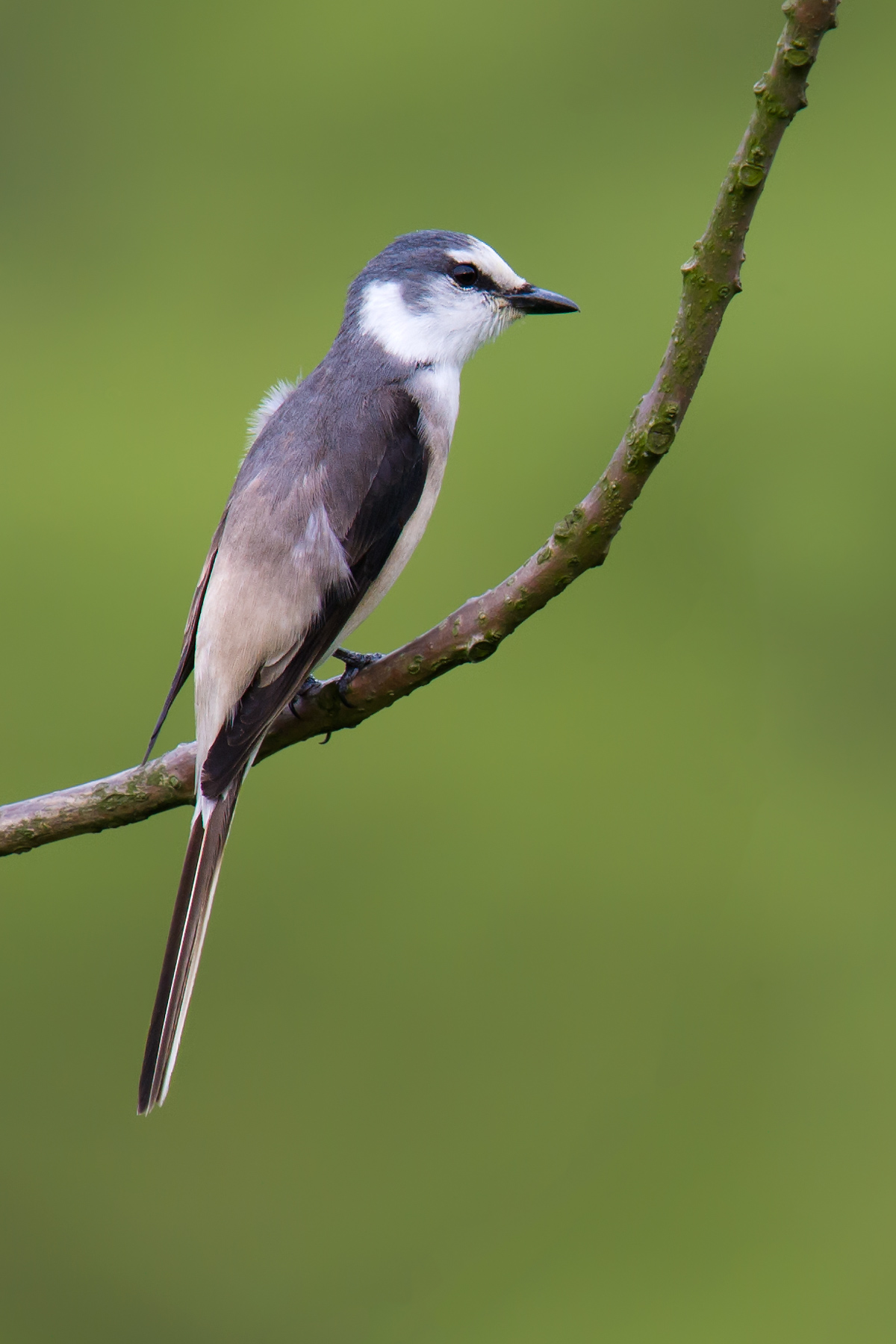
Black Bulbul Hypsipetes leucocephalus
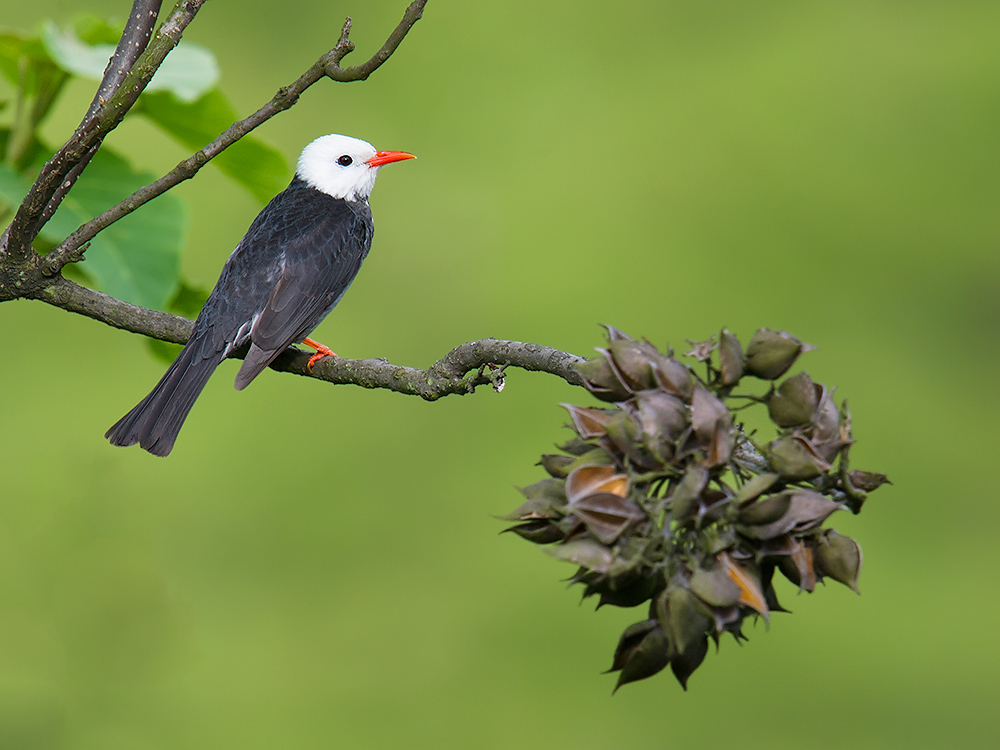
Mountain Bulbul Ixos mcclellandii
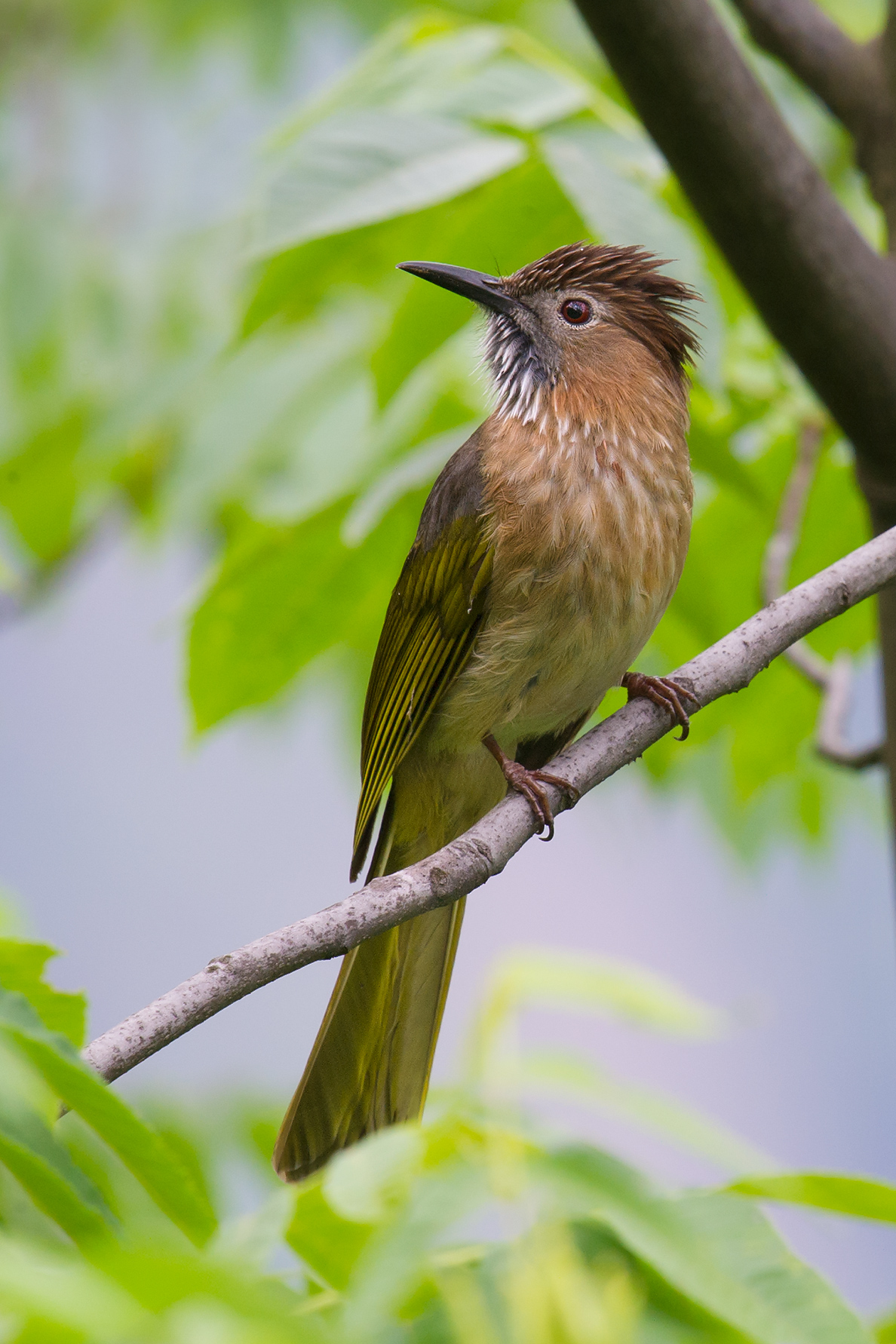
Brown-flanked Bush Warbler Horornis fortipes
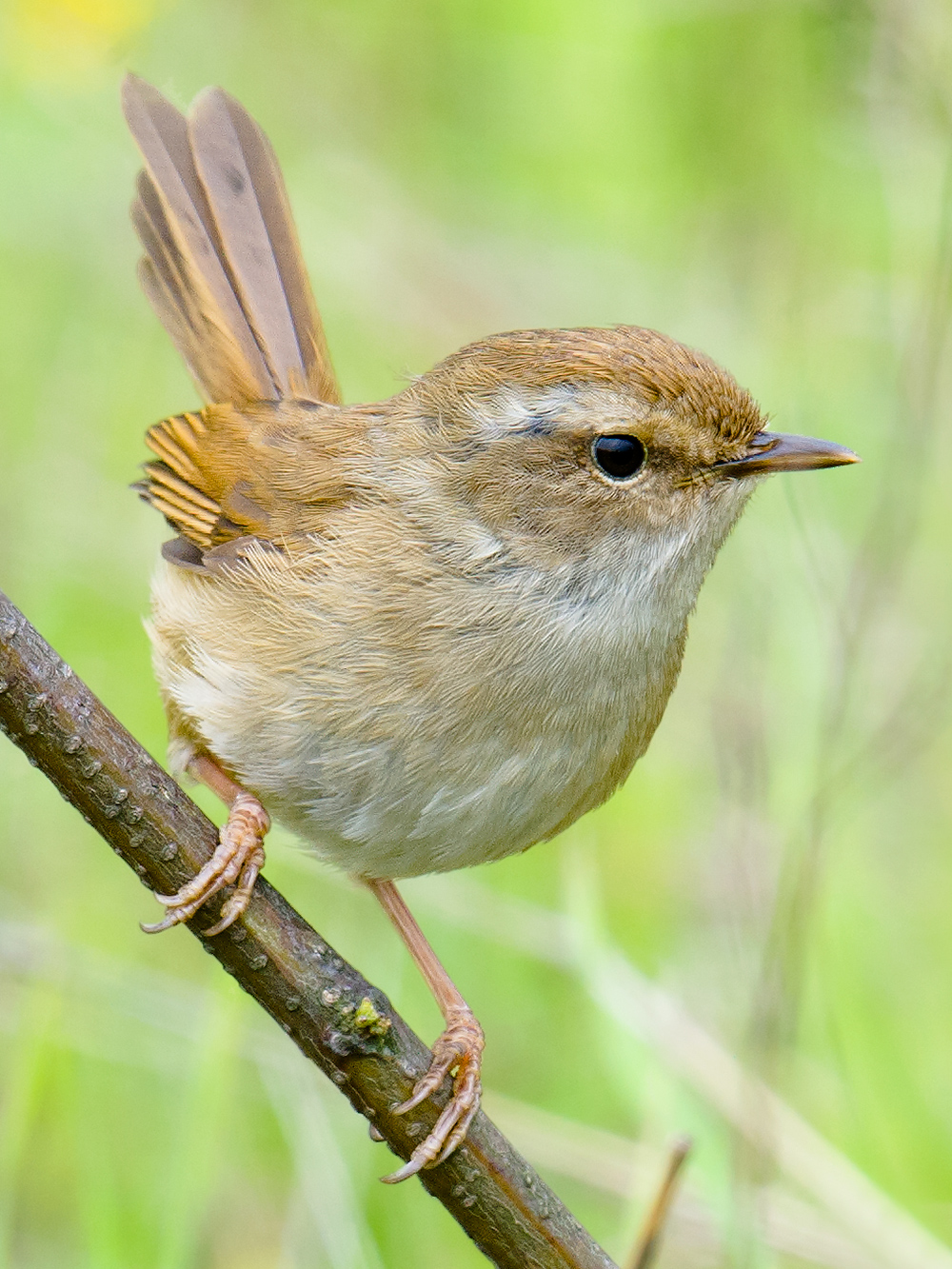
Hartert’s Leaf Warbler Phylloscopus goodsoni fokiensis
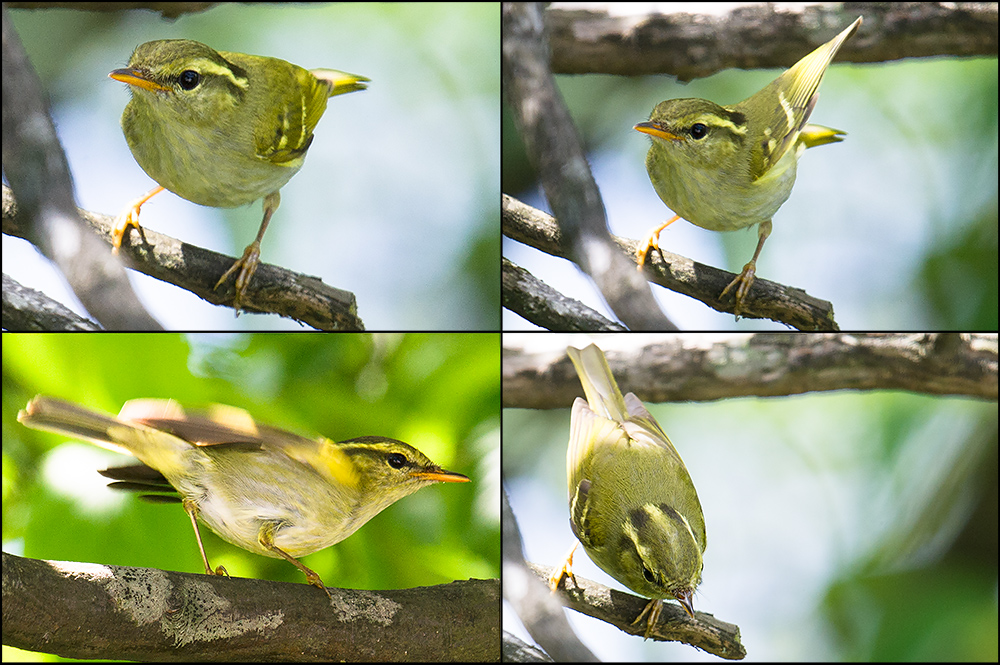
Moustached Laughingthrush Ianthocincla cineracea
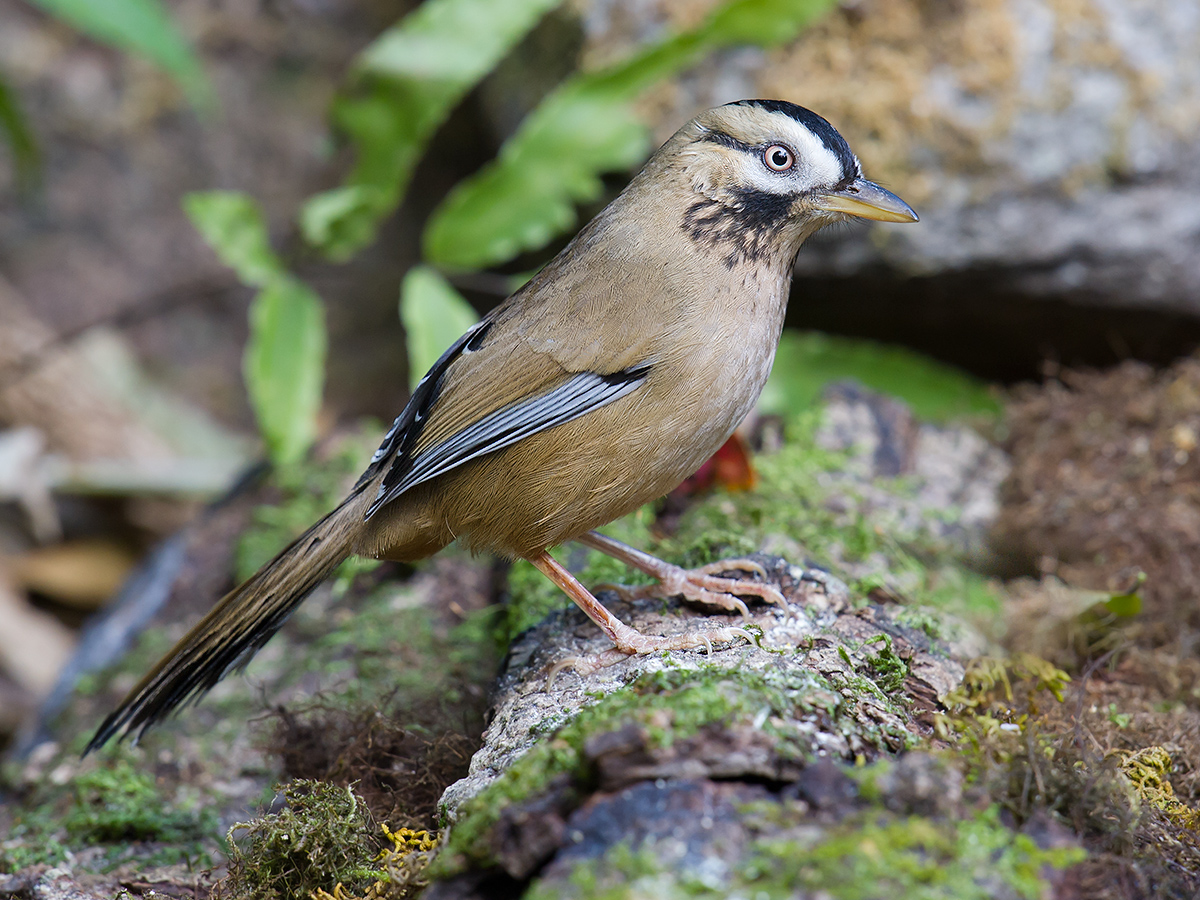
Buffy Laughingthrush Garrulax berthemyi
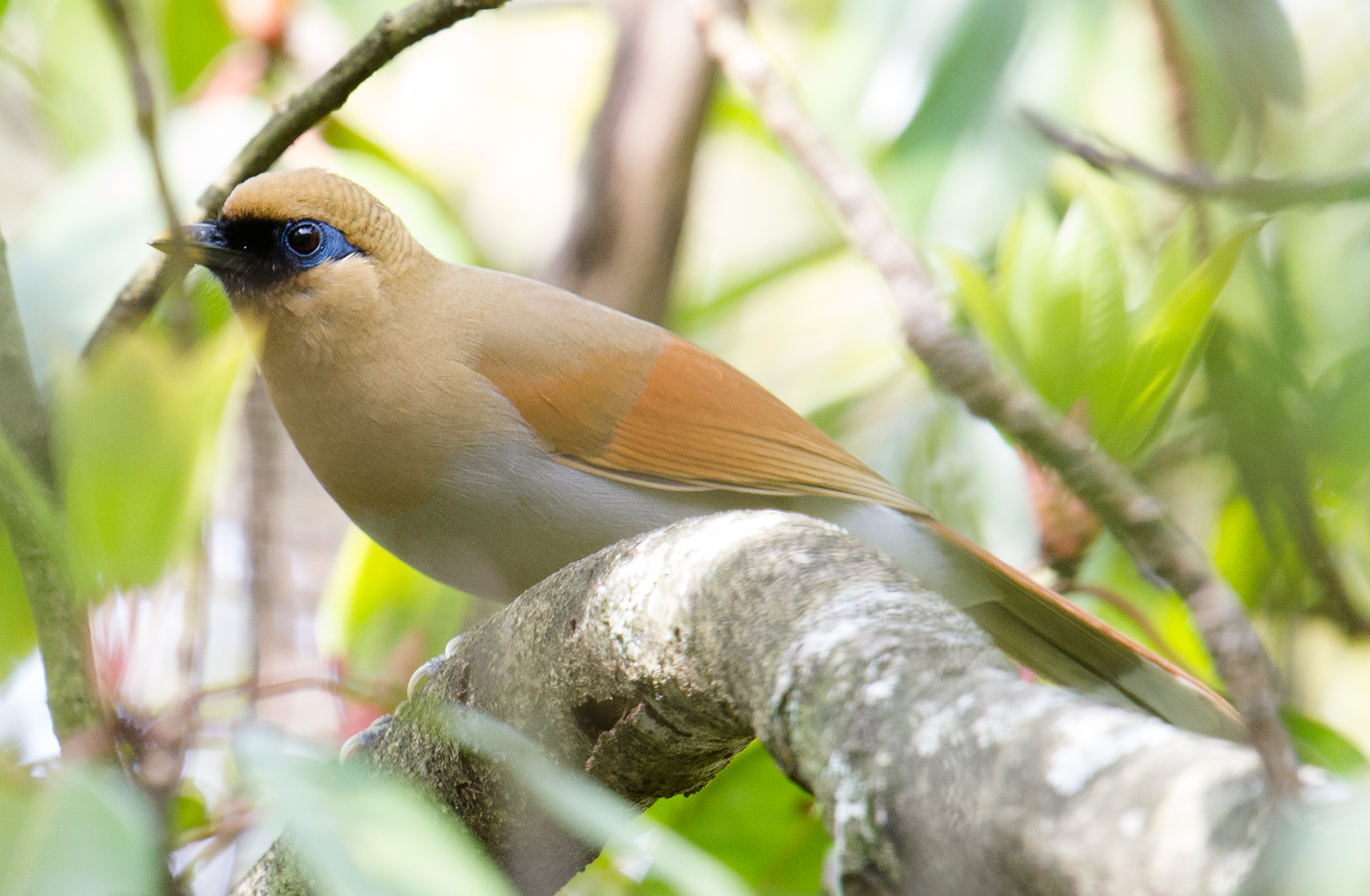
Little Forktail Enicurus scouleri
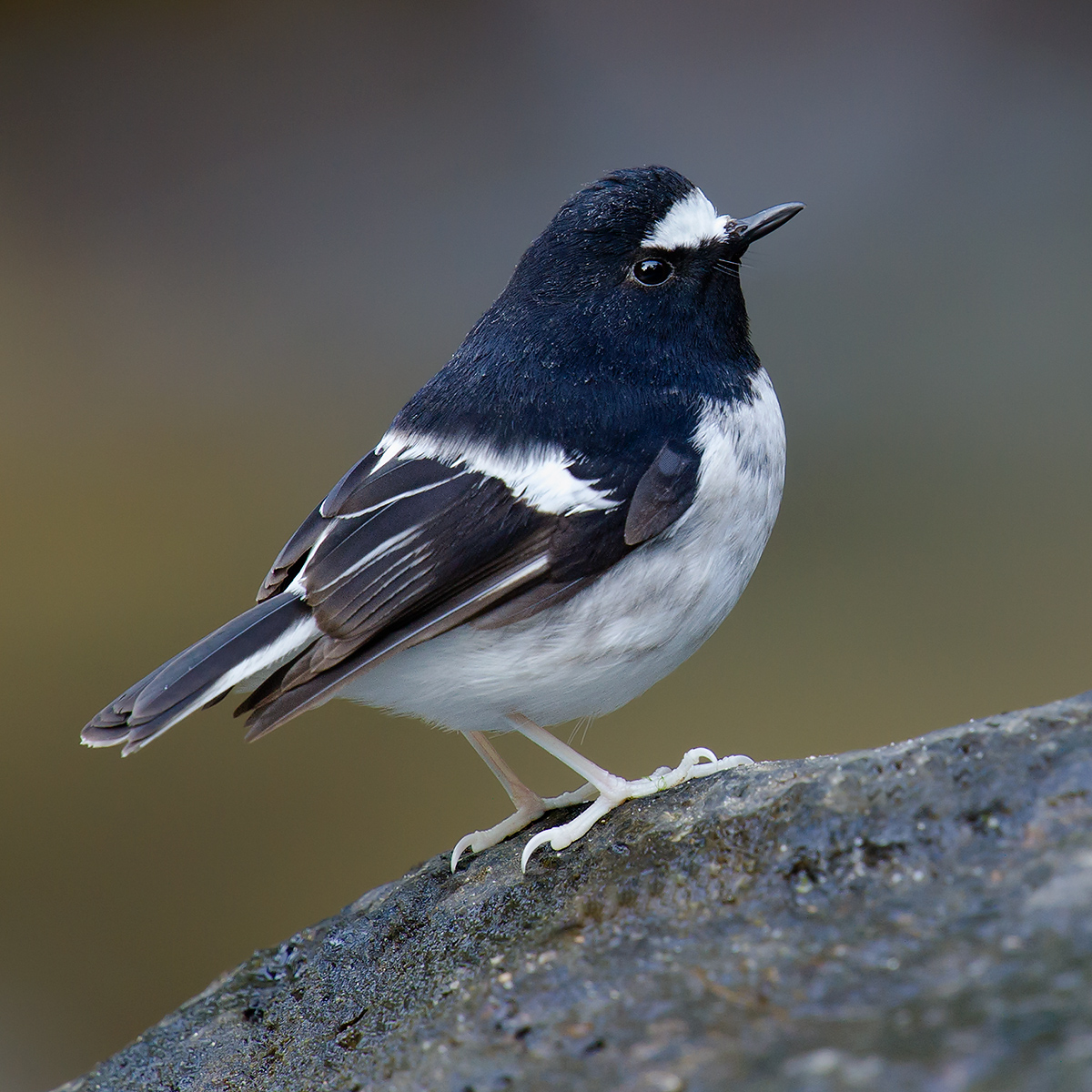
White-crowned Forktail Enicurus leschenaulti
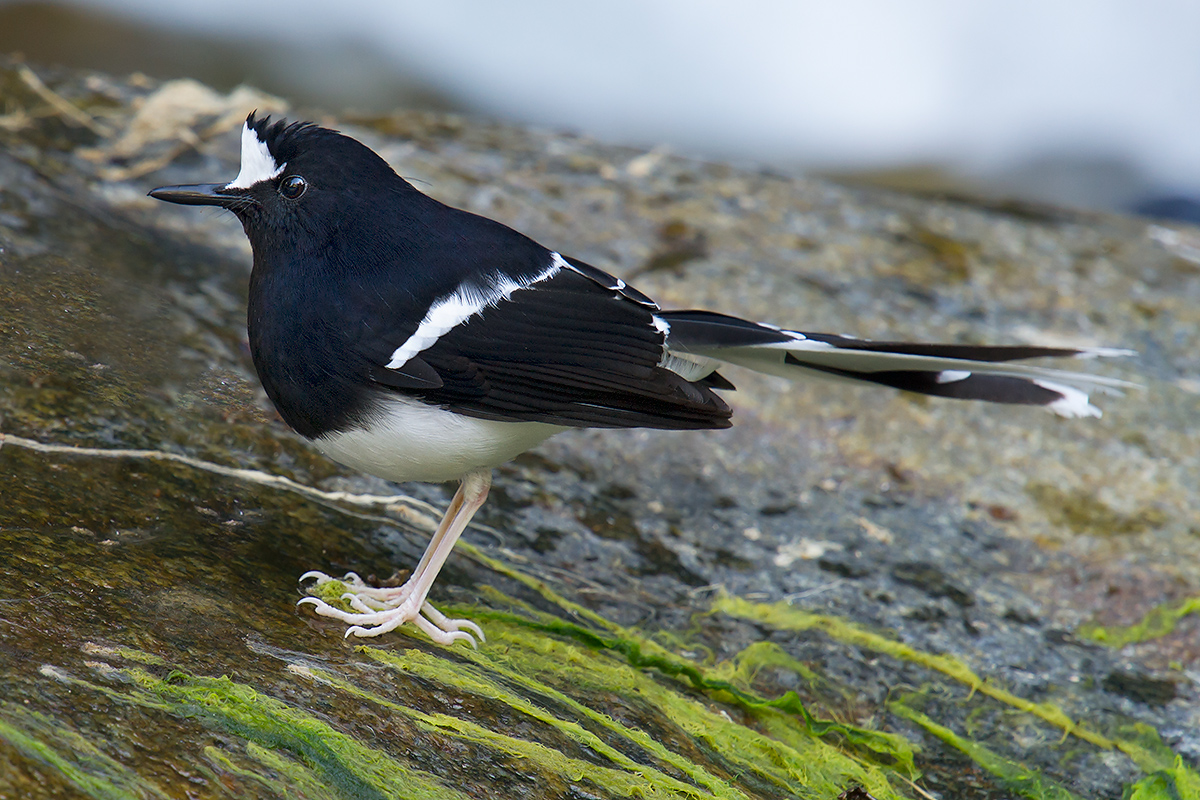
Russet Sparrow Passer rutilans
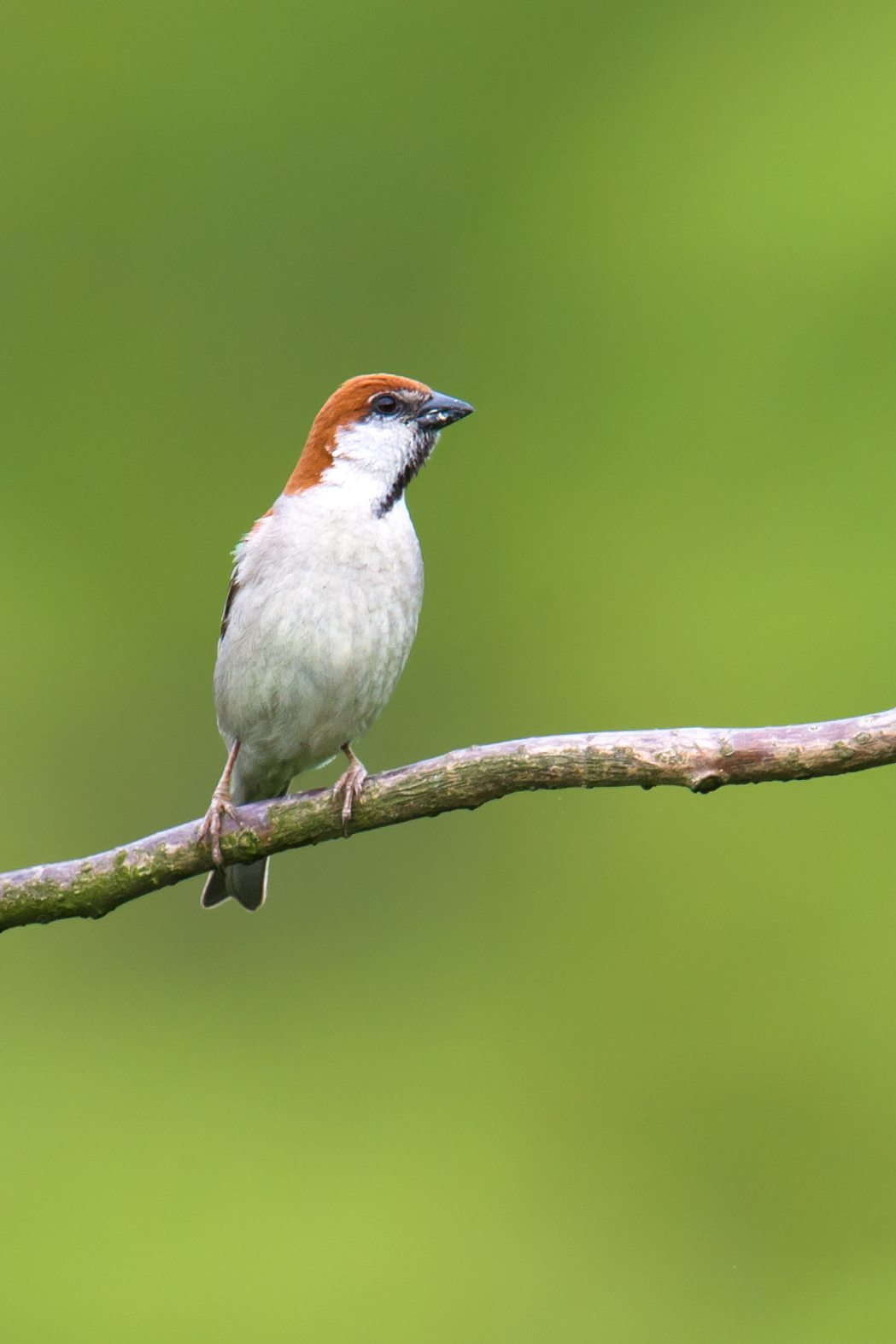
Crested Bunting Emberiza lathami
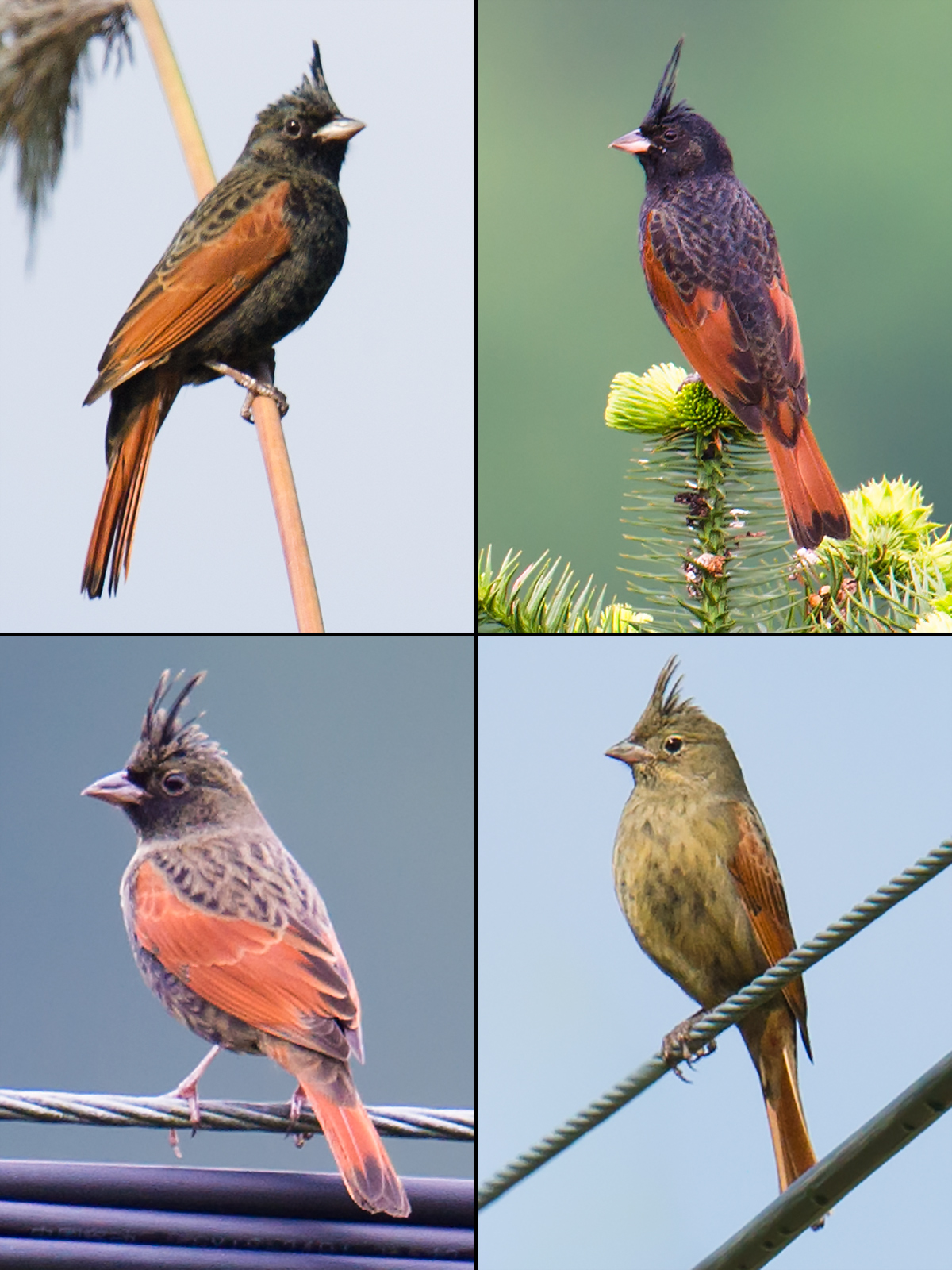
MY FIRST TRIP TO TIANMUSHAN
I have made two trips to Tianmushan, both in 2015. I spaced the trips six months apart in order to see the site at opposite ends of the year. Here is my account of the first trip, which took place in May. (Click here for our trip of November 2015.)
Thurs. 7 May 2015
Hangzhou Nantianmu Forest Park (Hángzhōu Nántiānmù Sēnlín Gōngyuán [杭州南天目森林公园]), 30.184555, 119.472668
Today my wife and partner Elaine Du and I scouted Hangzhou Nantianmu Forest Park, 255 km (159 mi.) southwest of Shanghai. We noted 21 species. We had Swinhoe’s Minivet, heard 11 Streak-breasted Scimitar Babbler, and saw 3 migrant Grey-streaked Flycatcher. We also found a pair of local poachers.
We entered and exited Hangzhou Nantianmu Forest Park by driving past an unmanned gate. I remarked to myself that a gate unmanned in the middle of the day is a strong indication that a park is being managed incorrectly. Elaine and I drove up the mountain, stopping at a gazebo where we found Russet Sparrow and the minivet. At the end of the road we met the poachers. They arrived on a moped. I saw their speaker and cages and told them that hunting wild birds is illegal in China. The younger poacher nodded as though he understood. The older man smiled nervously.
We drove back down the mountain. I said to Elaine that poaching must be pervasive around here if two guys can drive up a mountain with their poaching gear in full view.
Later, just outside the park gate, I told a villager that poaching was going on in the nearby park and asked him where I could report the crime. The villager said, in a friendly way, that the poachers take just “a few” (少) birds and that they do it just for fun (玩儿). The villager’s instinct to protect the lawbreakers shows how acceptable poaching is to him and presumably his fellow villagers.
The Russet Sparrow were able to make a living in the park because of the seeming absence of the more aggressive Eurasian Tree Sparrow. Today and on the ensuing three days in the Tianmu Mountains, Russet Sparrow was our default sparrow, commonly noted in town and country, and much more numerous than Eurasian Tree Sparrow, which in most places was absent.
Fri. 8 May 2015
East Tianmu Mountain Scenic Area (Dōng Tiānmùshān Jǐngqū [东天目山景区]), 30.342422, 119.509490
Elaine and I noted 30 species at East Tianmu. The highlight was finding one of our target species, a singing male Crested Bunting. Driving down the mountain road in the park, at an elevation of 600 m (1,970 ft.), we approached a bus stop, next to which was a quarry with steep walls. Immediately I was reminded of the roadside cliff in Yunnan where I had seen a female Crested Bunting in 2014. I stopped the car and spotted a Crested Bunting atop the highest conifer in the area. It sang a simple song over and over. A pair of Meadow Bunting were in the area.
Earlier, at the upper terminus of the cable car, Elaine and I saw a Crested Serpent Eagle carrying, you guessed it, a snake on the highest and last ride of its life. We walked from the upper terminus of the cable car to Zhaoming Temple (Zhàomíng Chánsì [昭明禅寺], 30.349009, 119.515961). I found a leech in the leaf litter and showed it to Elaine. The creature quickly attached itself to my glove. East and West Tianmu Mountain are the most leech-infested places I have ever birded.
Beautiful Zhaoming Temple, 1,500 years old, blends into the valley. We saw 2 Eurasian Jay, heard Yellow-bellied Tit and Collared Owlet, and on the way back down found 2 Grey Treepie and heard Great Barbet.
Our day began before dawn, when I ate breakfast on the patio of our room near the entrance to East Tianmu. I saw 4 Hair-crested Drongo and a Red-rumped Swallow nesting on the underside of the patio on which I was standing. We got past the gate at East Tianmu and drove to the end of the paved road and down the dirt road to its end, noting there Blue Whistling Thrush, White-crowned Forktail, and Brown Dipper as well as 2 Grey-headed Parrotbill and the first of many Streak-breasted Scimitar Babbler.
Our plan was to bird the road and temple then walk to the top of the mountain, where a friend told me Short-tailed Parrotbill and Slaty Bunting may be found. Rain dashed those plans, and I have yet to find either of those species in the Tianmu area.
Sat. 9 May 2015 and Sun. 10 May 2015
West Tianmu Mountain Nature Reserve (Tiānmùshān Zìrán Bǎohùqū [天目山自然保护区], 30.344148, 119.440201)
On Saturday Elaine and I noted 28 species. We spent most of the day in the Japanese Cedar forest below Xianren Ding at West Tianmu Mountain Nature Reserve. Fog and large, noisy crowds suppressed our total.
The next day we returned to the Xianren Ding area and enjoyed a banner day, noting 42 species. The highlight was a Chestnut-winged Cuckoo appearing out of nowhere and flying straight at my head. The cuckoo was responding to the most effective “phish” I ever did, a whistle imitating its call. 5 Buffy Laughingthrush gave rise to the hope that at Tianmu the species may be locally common. Black Eagle flew low over the forest, Speckled Piculet joined a bird wave, Eurasian Jay and Black Bulbul were visually conspicuous, and Indian Cuckoo, Great Barbet, Collared Owlet, and Rufous-faced Warbler were more often heard than seen. Mugimaki Flycatcher and Brambling were among the migrants noted, with Grey Wagtail a possible breeder and White Wagtail already feeding fledglings.
Elaine and I arrived at the Japanese Cedar forest at 5:55 a.m., well before the crowds. The cool, quiet forest was full of enchantment and buzzing with birds. Chinese Hwamei cut melodiously through the silence. A standard bird wave included Black-throated Bushtit, Huet’s Fulvetta, and Indochinese Yuhina. White-crowned Forktail zipped along the creek.
As the hours wore on and noisy hikers began to pass through, Elaine and I followed an abandoned trail a few hundred meters. The trail is leech-infested, but with regular inspections of our clothing and socks pulled high over our pant legs, we managed to pick off every leech before it found our flesh.
Chestnut-winged Cuckoo was a species I hadn’t noted in five years. The cuckoos were calling from deep cover near the trail. My phish caused them to call loudly and fly in a circle around us. The call and vivid colors of this beautiful cuckoo made for an impressive spectacle. Those thrilling moments gave me energy as I drove back to Shanghai.
FURTHER READING
This post is the first in a two-post series about birding in the Tianmu Mountains.
Tianmushan: A Must See Site for Shanghai Birders (Part 1)
Tianmushan: A Must See Site for Shanghai Birders (Part 2)
More posts on Tianmushan:
Tianmushan in July
Tianmushan in Autumn
Koklass Pheasant Highlight Tianmu Trip
See also our coverage of other areas in south China:
Birding Emeifeng, Fujian (Part 1)
Birding Emeifeng, Fujian (Part 2)
Home to Shanghai (Plus a Jaunt to Fujian)
Trip Planner: Fuzhou National Forest Park
Nonggang Babbler: From ‘New to Science’ to ‘Automatic Tick’
Featured image: Birds and plants of Tianmushan. Clockwise from top L: Streak-breasted Scimitar Babbler, Ginkgo Ginkgo biloba, Indochinese Yuhina, and Black Bulbul. (Craig Brelsford)

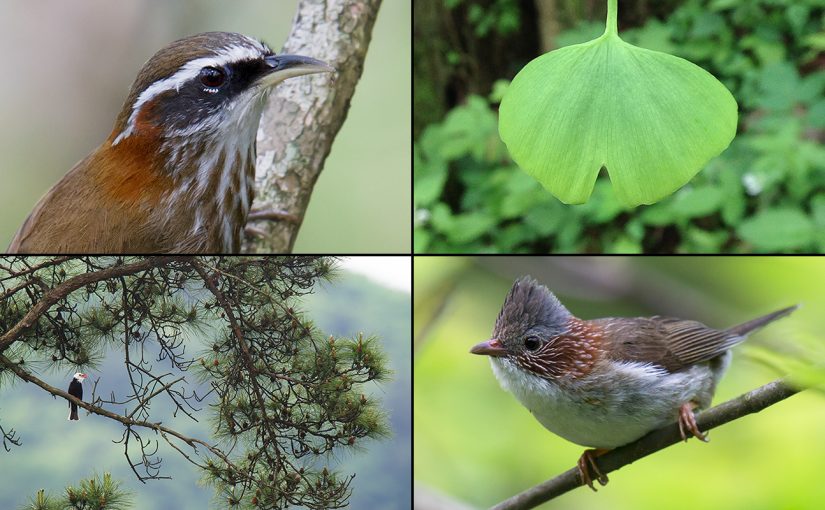
Long Wang Shan approached from the Anji side is terrific—much less touristy than Tianmu … rare giant salamanders.
Outstanding write-up! I can not wait to try this on my next Shanghai layover. Keep up the good work, Hiko!
Tommy
Captain B777
Emirates Airlines, Dubai
Wonderful write up and great pictures! thanks
Wonderful write-up. I certainly hope to go to these amazing mountains at some stage during my stay in China. The photographs are outstanding too.
Fine description and pictures, Many Thanks – I must get up there soon !
Thought you might like to see my bird list from my recent trip to China. My lifers are in bold…. highlights include Siberian Crane & Scaly-sided Merganser, quality birds!
Jiangxi and Jiangsu Provinces, South China, February 2019
Poyang Lake (Wucheng, Yongxiu County, Jiujiang, Jiangxi) 11 Feb
1. Swan Goose Anser cygnoides 100s
2. Bean Goose sp A. fabalis or A. serrirostris 100s
3. Bewick’s Swan Cygnus columbianus bewickii 3
4. Mallard Anas platyrhynchos
5. Eastern Spot-billed Duck Anas zonorhyncha
6. Northern Pintail Anas acuta
7. Eurasian Teal Anas crecca
8. Little Grebe Tachybaptus ruficollis poggei
9. Oriental Stork Ciconia boyciana 12
10. Black Stork Ciconia nigra 2
11. Eurasian Spoonbill Platalea leucorodia leucorodia sev
12. Grey Heron Ardea cinerea jouyi
13. Little Egret Egretta garzetta garzetta
14. Great Cormorant Phalacrocorax carbo sinensis
15. Western Osprey Pandion haliaetus haliaetus 1
16. Eastern Marsh Harrier Circus spilonotus 1
17. Common Moorhen Gallinula chloropus chloropus
18. Siberian Crane Leucogeranus leucogeranus 275
19. White-naped Crane Antigone vipio 250
20. Hooded Crane Grus monacha 6
21. Grey-headed Lapwing Vanellus cinereus 1
22. Kentish Plover Charadrius alexandrinus nihonensis
23. Spotted Redshank Tringa erythropus
24. Green Sandpiper Tringa ochropus
25. Black-headed Gull Chroicocephalus ridibundus
26. Whiskered Tern Chlidonias hybrida hybrida
27. White-winged Tern Chlidonias leucopterus
28. Feral Pigeon Columba livia
29. Spotted Dove Spilopelia chinensis tigrina
30. White-throated Kingfisher Halcyon smyrnensis fokiensis 1
31. Pied Kingfisher Ceryle rudis insignis
32. Long-tailed Shrike Lanius schach schach
33. Oriental Magpie Pica serica serica
34. Rook Corvus frugilegus pastinator
35. Oriental Skylark Alauda gulgula weigoldi/coelivox
36. Light-vented Bulbul Pycnonotus sinensis sinensis/hainanus
37. White-cheeked Starling Spodiopsar cineraceus
38. Crested Myna Acridotheres cristatellus cristatellus
39. Chinese Blackbird Turdus mandarinus mandarinus/sowerbyi
40. Daurian Redstart Phoenicurus auroreus auroreus/leucopterus
41. Tree Sparrow Passer montanus saturates
42. White Wagtail Motacilla alba leucopsis
43. Buff-bellied Pipit Anthus rubescens japonicus
Poyang Lake (Nanji Xiang, Xinjian District, Nanchang, Jiangxi) 11 Feb
44. Greylag Goose Anser anser rubrirostris 1000s
Bean Goose sp. 100s
Swan Goose 100s
45. Great Crested Grebe Podiceps cristatus cristatus
Oriental Stork ~100
Eurasian Spoonbill ~500
46. Eurasian Coot Fulica atra atra
47. Pied Avocet Recurvirostra avosetta 10
48. Common Snipe Gallinago gallinago gallinago 3
49. Northern Lapwing Vanellus vanellus
50. Black-tailed Godwit Limosa limosa melanuroides 1000s
51. Wood Sandpiper Tringa glareola
White-throated Kingfisher 1
52. Black-collared Starling Gracupica nigricollis 1
Chinese Blackbird
53. Black-faced Bunting Emberiza spodocephala spodocephala 1
Xingjiang River, Mts of Jiangxi/Anhui border (Kengko, Wuyuan, Jiangxi) 12 Feb
Eastern Spot-billed Duck
Eurasian Teal
54. Mandarin Duck Aix galericulata ~20
55. Scaly-sided Merganser Mergus squamatus 3
Little Egret
Green Sandpiper
56. Common Greenshank Tringa nebularia 5
57. Common Kingfisher Alcedo atthis bengalensis 1
Pied Kingfisher
Long-tailed Shrike
58. Japanese Tit Parus minor minor/commixtus
59. Collared Finchbill Spizixos semitorques semitorques 20+
Light-vented Bulbul
60. Brown-flanked Bush Warbler Horornis fortipes davidianus 1
61. Pallas’s Warbler Phylloscopus proregulus 1
62. Streak-breasted Scimitar Babbler Pomatorhinus ruficollis — 1
63. Rufous-capped Babbler Stachyridopsis ruficeps davidi 1
64. Masked Laughingthrush Garrulax perspicillatus 1
65. Huet’s Fulvetta Alcippe hueti hueti ~20
66. Indochinese Yuhina Yuhina torqueola ~20
67. Vinous-throated Parrotbill Sinosuthora webbiana suffusa
Black-collared Starling 2
68. Oriental Magpie-robin Copsychus saularis saularis
Daurian Redstart
69. Plumbeous Water Redstart Phoenicurus fuliginosus fuliginosus
70. White-crowned Forktail Enicurus leschenaultia sinensis 1
71. Grey Wagtail Motacilla cinerea cinerea
Nearby mountains (from roadside), Jiangxi
72. Black Eagle Ictinaetus malaiensis malaiensis 1
Nanjing, Jiangsu
73. Siberian Blue Robin Larvivora cyane — 1
Pallas’s Warbler 1
74. Black-throated Bushtit Aegithalos concinnus concinnus ~20
75. Chinese Grosbeak Eophona migratoria migratoria/sowerbyi
What a great list, Jason, and there must have been many thrills for you. Siberian Blue Robin in Nanjing in February is a surprise. Can you describe the circumstances under which you saw it? Male or female?
Congratulations on your very enterprising trip.
If you have some doubts about my SBR record, I will be interested to get your thoughts on what I may have seen.
I saw the bird at close range, but briefly, as it was very skulking. I only saw it a few times (for a few second each) before I lost it to view. It stayed very close to the ground, moving between low shrubs on the edge of the Nanjing city wall. It was a female / immature bird, and I didn’t see any blue colouration around the tail/rump area (although my views were brief, and I may have missed it). Interestingly, a Pallas’s Warbler was associating very closely, following the chat.
It was a small, stumpy but stocky chat with rather horizontal posture, and it constantly pumped its short tail. Rather nondescript plumage wise, being mid-brown above and dirty whitish below, the only notable feature being a strong pale eyering. I did not note the legs or bill.
If you think my identification may be wrong, what else would you suggest?
What an excellent description of your sighting of Siberian Blue Robin Larvivora cyane. You note the pumping tail and horizontal stance of your specimen, differentiating it thereby from Rufous-tailed (Swinhoe’s) Robin L. sibilans, which has a more erect posture and tends to shiver its tail. You noted no blue coloration on the rump, but you report that your sightings were brief. You say that a Pallas’s Leaf Warbler was following the “chat,” a word that, in light of your detailed analysis, in which your close attention was obvious, leads me to believe that you were correct at least to the genus level.
I’d say that you likely saw Siberian Blue Robin and that you gave careful consideration to Rufous-tailed Robin, which to my reading would be the next most likely species. I surmise that you were reaching for your copy of Brazil’s Birds of East Asia very shortly after the sighting and that you had a clear picture of your bird in your mind as you leafed through the pages.
According to current understandings, which are highly imperfect, the forests of Nanjing would be the northern edge of the winter range of Larvivora cyane. If this is so, then Siberian Blue Robin joins a long list of species whose northern distributions (wintering or otherwise) fade out in the forested hills and mountains of east-central China, where the Palearctic ends and the Indo-Malayan or Oriental zone begins.
Other places not far from Nanjing, such as Tianmushan, the subject of this post, show the transitional, north-meets-south character of east-central China. In November 2014 at Wuyuan, another location south of Nanjing, Elaine and I had an experience similar to yours with the robin. We found singing Asian Stubtail, another Southeast Asian winterer a few individuals of which apparently can be found nearly to the Yangtze.
I really appreciate all the helpful information on your website, in articles like this one. I have been living and working in Shanghai for more than a year now, and have already made two trips to Tianmu Shan (last November and June, the latter trip with Kai Pflug) and numerous trips to Nanhui and other spots around Shanghai, as well as elsewhere in China (Fuzhou NFP, Baihualing, Longcanggou, e.g.). I live fairly close to Tianma Mountain in western Shanghai, so that has been an area I have given quite a bit of coverage to. You might be interested to know that white-necklaced partridge are present at Tianmu Shan; I flushed a pair of them from beside a small forest pool on a little used side trail beyond the temple area in the Longfengjian scenic area. We also had both silver and koklass pheasant along the trail that same day. Just beyond the pool where I found the partridge, I pished up a very large mixed flock of gray-headed parrotbills and buffy laughingthrushes; the laughingthrushes were remarkably inquisitive, for a change, and landed on open branches all around me. That was quite a morning! In any event, thanks once again for all of the invaluable information, and best wishes on your continued endeavors in Florida!